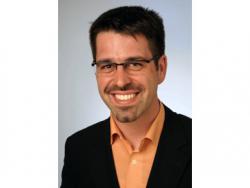Ralf Tonner, Fachbereich Chemie & Material Sciences Center, Philipps-Universität Marburg, Germany
hewl102
Inner interfaces between different materials as well as functionalized surfaces are the focus of many scientific investigations in the last decade.[1] This can be understood due to the key role played in fundamental and applied research. Interfaces and functionalized surfaces exhibit interesting chemical and physical phenomena not seen on clean surfaces or in bulk materials, like charge-transfer excitons, tuneable surface reactivity or unusual structure formation. Modern electronic devices also heavily rely on a smooth integration of different materials and well-defined interfaces, which renders this field highly relevant for technological applications. Joint investigations by experiment and theory can elucidate the key effects in model materials. The focus of the group is the application of density functional theory together with newly developed electronic structure analysis methods for surfaces and interfaces.[2]
An overview of our computational investigations in the field will be presented. The functionalization of covalent semiconductor silicon with III/V compound semiconductors (GaP, Ga(NAsP)) via deposition techniques requires an in-depth analysis of the chemical reactions and opens up the possibility to derive reactivity descriptors.[3] Organic functionalization of the Si surface provides the opportunity to transfer concepts from molecular chemistry to extended systems by electronic-structure analysis.[4] The description of spectroscopic measures for metal/organic interfaces enables the investigation of interface-dynamical charge transfer.[5]
[1] a) A. Nilsson, L. G. M. Pettersson, J. Nørskov, Chemical Bonding at Surfaces and Interfaces, Elsevier, Amsterdam, 2007; b) A. Groß, Theoretical Surface Science, Springer, Berlin, Heidelberg, 2009.
[2] M. Raupach, R. Tonner, J. Chem. Phys, 2015, 122, 044707.
[3] a) A. Stegmüller, P. Rosenow, R. Tonner, PCCP, 2014, 17018; b) A. Stegmüller, R. Tonner, Inorg. Chem., 2015, DOI: acs.inorgchem.5b00687.
[4] G. Mette, M. Reutzel, R. Bartholomäus, S. Laref, R. Tonner, M. Dürr, U. Koert, U. Höfer, ChemPhysChem 2014, 15, 3725.
[5] P. Rosenow, P. Jakob, R. Tonner, arXiv:1503.04401.

